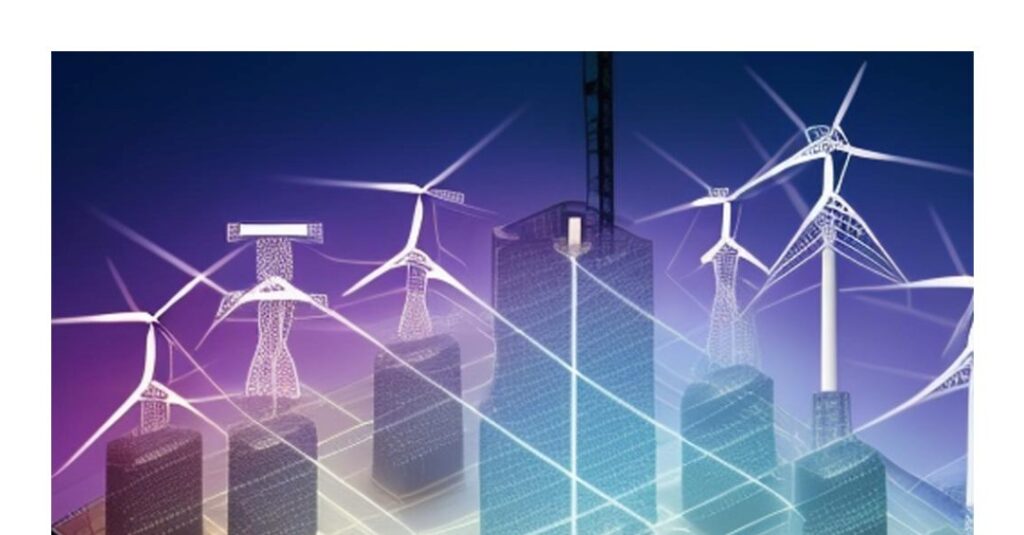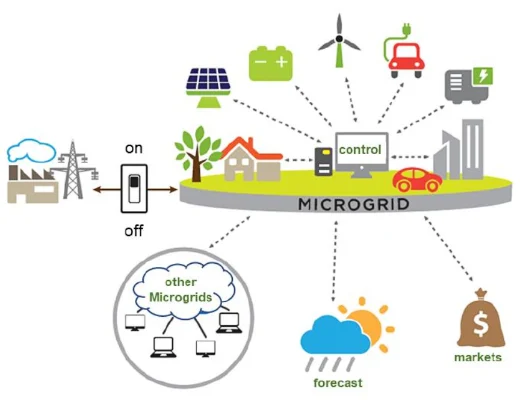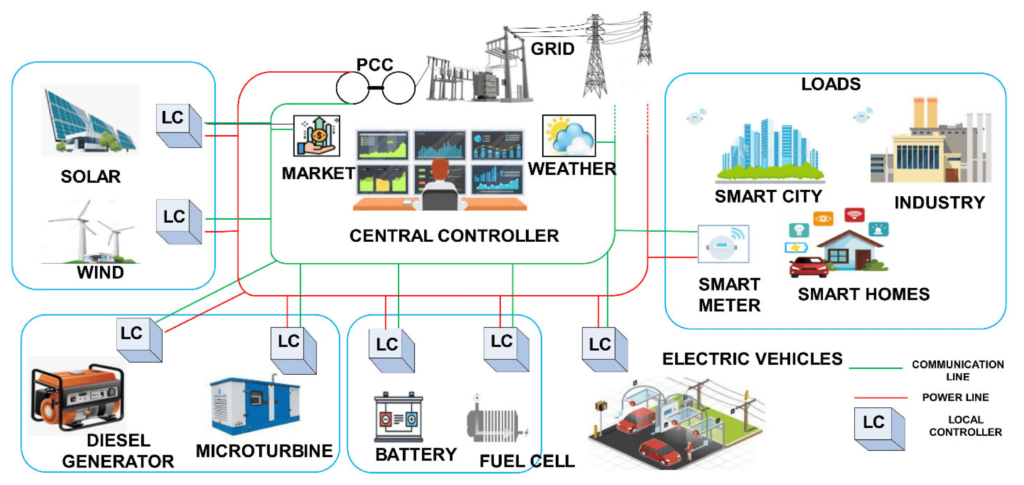
As the world transitions toward cleaner, more sustainable energy sources, the role of hybrid microgrids in shaping the future of energy cannot be overstated. These localized energy systems combine renewable energy, storage, and traditional power sources to deliver reliable and efficient power solutions. By decentralizing energy generation and distribution, hybrid microgrids are revolutionizing the way communities and businesses meet their energy needs, driving sustainability, resilience, and innovation.
What Are Hybrid Microgrids?
Hybrid microgrids are energy systems that integrate multiple power sources, including renewable energy (solar, wind, biomass), energy storage systems (batteries), and traditional generators.
- Key Features:
- Operates autonomously or connected to the main grid.
- Balances power supply and demand dynamically.
- Enhances energy reliability and resilience.
These systems are designed to optimize energy use by leveraging renewable resources and reducing dependence on fossil fuels.
Why Are Hybrid Microgrids Revolutionizing Energy Systems?

Hybrid microgrids address critical challenges in the energy sector, including reliability, sustainability, and access to energy.
- Decentralization of Energy:
By generating power locally, hybrid microgrids reduce reliance on centralized grids, which are often prone to disruptions. - Resilience Against Outages:
In the face of natural disasters or grid failures, microgrids provide a reliable backup, ensuring uninterrupted energy supply. - Integration of Renewable Energy:
Hybrid systems optimize renewable energy use, reducing greenhouse gas emissions and dependency on non-renewable resources. - Cost Efficiency:
By utilizing renewable energy and efficient storage, hybrid microgrids lower energy costs over time.
The Role of Hybrid Microgrids in a Sustainable Future
Sustainability lies at the heart of hybrid microgrid technology. These systems:
- Enable Carbon Reduction: By integrating solar and wind energy, microgrids help decrease carbon footprints.
- Promote Energy Independence: Communities and businesses can generate their own power, reducing reliance on external providers.
- Support Circular Economies: Microgrids encourage localized energy solutions, fostering self-sufficient communities.
Technologies Driving Hybrid Microgrids
Advanced technologies are integral to the efficiency and scalability of hybrid microgrids.
- Energy Storage Systems:
- Lithium-ion and flow batteries ensure stable energy supply by storing excess renewable energy.
- Smart grids manage distribution intelligently, reducing waste.
- Microgrid Controllers:
These systems automate energy distribution, optimizing performance based on demand and resource availability. - Renewable Energy Integration:
Solar panels, wind turbines, and bioenergy units work in tandem to maximize renewable energy use.
Applications of Hybrid Microgrids

Hybrid microgrids are transforming energy access across various sectors:
- Rural Electrification:
In remote areas lacking grid access, microgrids provide a sustainable energy solution. - Disaster Recovery:
After natural disasters, microgrids restore power faster than traditional systems. - Commercial and Industrial Use:
Businesses leverage microgrids to cut costs, enhance reliability, and meet sustainability goals. - Military and Critical Facilities:
Hybrid microgrids ensure uninterrupted power for critical operations.
Challenges in Adopting Hybrid Microgrids

Despite their benefits, hybrid microgrids face certain barriers to widespread adoption:
- High Initial Costs:
The upfront investment for installation and technology integration can be significant. - Regulatory Hurdles:
Complex policies and regulations can delay implementation. - Technical Complexity:
Managing diverse energy sources requires advanced technology and expertise. - Scalability Issues:
Expanding microgrid systems to accommodate growing demand can be challenging.
Future Trends in Hybrid Microgrids
The hybrid microgrid sector is evolving rapidly, with several trends shaping its future:
- Advanced Battery Technology:
New battery technologies, such as solid-state batteries, promise higher efficiency and longer lifespans. - AI-Driven Energy Management:
Artificial intelligence optimizes energy use, predicts demand, and enhances grid reliability. - Blockchain for Energy Trading:
Decentralized systems enable peer-to-peer energy sharing and transparent transactions. - Increased Government Support:
Subsidies and incentives are encouraging the adoption of sustainable energy solutions.
Benefits of Hybrid Microgrids for Communities
- Energy Security: Local generation ensures independence from grid disruptions.
- Cost Savings: Reduced energy bills due to efficient renewable integration.
- Environmental Benefits: Decreased reliance on fossil fuels leads to a greener planet.
- Community Empowerment: Communities gain control over their energy resources.
Hybrid microgrids are at the forefront of the energy revolution, offering a reliable, sustainable, and localized alternative to traditional systems. By integrating renewable energy, advanced storage, and intelligent management, these systems empower communities and businesses to achieve energy independence while reducing environmental impact.
As technology advances and adoption barriers diminish, hybrid microgrids will play an even greater role in shaping a resilient and sustainable energy future. The transition to localized energy solutions isn’t just a possibility—it’s a necessity for a thriving planet.
FAQs
What is a hybrid microgrid?
A hybrid microgrid integrates multiple energy sources, such as solar, wind, and traditional generators, with storage systems to provide reliable and efficient power.
How do hybrid microgrids promote sustainability?
By maximizing renewable energy use and reducing fossil fuel dependency, hybrid microgrids lower carbon emissions and support environmental goals.
Are hybrid microgrids expensive to install?
While initial costs can be high, long-term savings from reduced energy bills and maintenance often outweigh these expenses.
Can hybrid microgrids operate without the main grid?
Yes, hybrid microgrids can function autonomously, making them ideal for remote or disaster-prone areas.
What role does technology play in hybrid microgrids?
Advanced technologies like energy storage, AI-driven controllers, and renewable integration are critical to the efficiency and scalability of hybrid microgrids.
Where are hybrid microgrids most useful?
Hybrid microgrids are beneficial in rural electrification, disaster recovery, industrial applications, and ensuring energy resilience for critical facilities.



